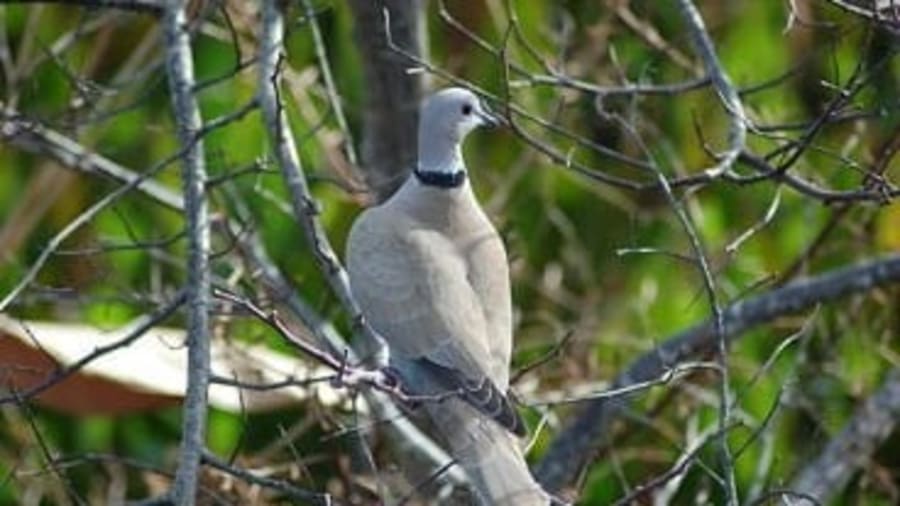Michigan has two invasive birds, the mute swan and the Eurasian collared dove.
One of them is described as “one of the world’s most aggressive waterfowl species” -- I’ll give you a hint, it’s not the dove.
Mute swans were brought to Michigan more than 100 years ago, escaped captivity and have been wreaking havoc ever since. The Eurasian collared dove is considered a pest in agricultural areas, but at least they’re not attacking boaters every year.
More information on both of these birds is available below.
Mute swan
- Name: Cygnus olor
- Status: Established in Michigan
Mute swans were introduced to North America in the mid-1800s to decorate parks and estates. They were brought to Michigan in 1919. They escaped captivity and established a wild population. Their numbers are growing quickly and they can cause damage to Michigan’s natural resources.
Mute swans are “one of the world’s most aggressive waterfowl species,” especially when they are nesting or raising their young. Each year the Michigan Department of Natural Resources receives reports of mute swans attacking people on boats and on shore. Mute swans also drive out native birds and other wetland wildlife. They will go as far as to chase native breeding birds from their nests.
A single mute swan can eat four to eight pounds of plants each day. They uproot and destroy wetland plants that typically serve as a main food source for native birds and cover for native fish and invertebrates. A flock of mute swans can destroy an entire wetland ecosystem.
Mute swans are described as having the following:
- Adult mute swans have orange bills
- A black knob on the top of their bill
- “S” curve of the neck (trumpeter swans have a “C” curve)
- A quieter bird (trumpeter swans have a loud “trumpet” call)
Hunting mute swans is not allowed, but the DNR issues permits to remove mute swans and their nests and eggs. If you have mute swans on your property you can request a permit to remove them from your local DNR office.
Eurasian collared dove

- Names: Eurasian Collared Dove, Streptopelia decaocto
- Status: Detected in Michigan
Eurasian collared doves live on farmlands, open country and wood edges in suburban and urban areas. They thrive in areas with a combination of open ground and trees. They mostly eat seeds and cereal grain but may eat some berries, plant material and invertebrates.
They are native to Asia, Europe, and Northern Africa, but have established populations in most of the United States except for northeastern states. They are a concern because of how quickly populations spread. They compete with native species for food and other resources. They are considered a pest in agricultural areas, especially in areas that grow grains. They are also capable of carrying West Nile Virus.
Eurasian collared doves are described as having the following:
- Mostly gray with white upper body
- Black collar on the back of its neck
- Slender black bill
- Deep red iris of the eye
- Broad, squared tail with black base
- Dark red legs and feet
Mourning doves look similar to Eurasian collared doves, but mourning doves are native to Michigan. Mourning doves are smaller in overall size and do not have a black collar. Mourning doves also have a blue ring around the eyes, black spots on the back and a pointed tail.
It is against the law to possess, introduce, import, sell or offer Eurasian collared doves for sale in Michigan -- except for under certain circumstances. You can report sightings to the Midwest Invasive Species Information Network using their online reporting tool or their app.
You can click here to learn more about the Eurasian collared dove.
Want to learn more about Michigan’s invasive species? Click here to view previous coverage.



